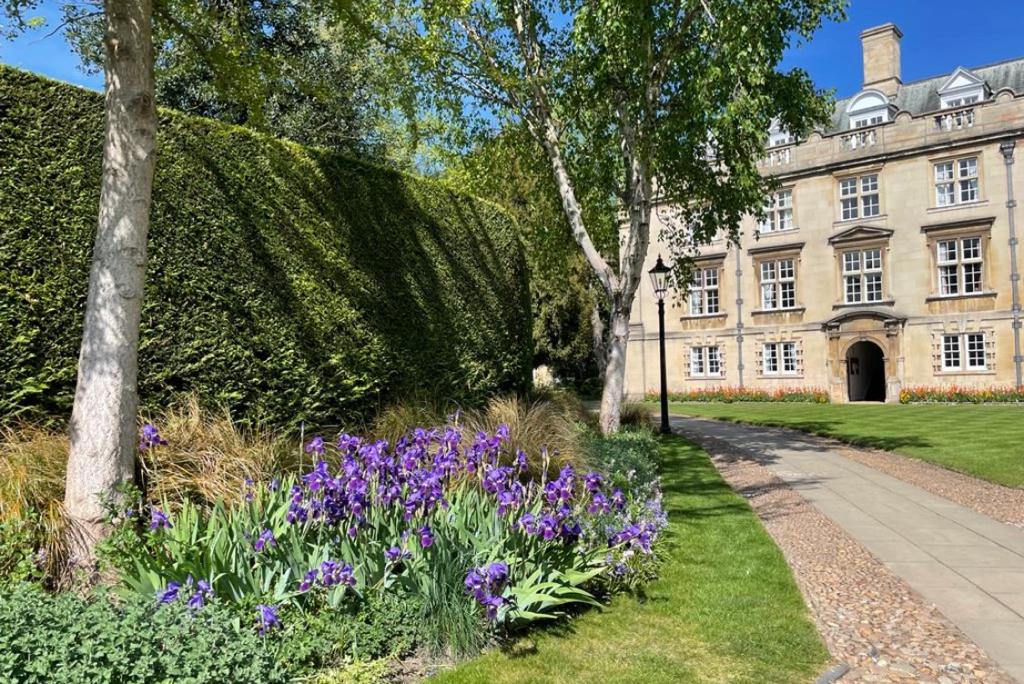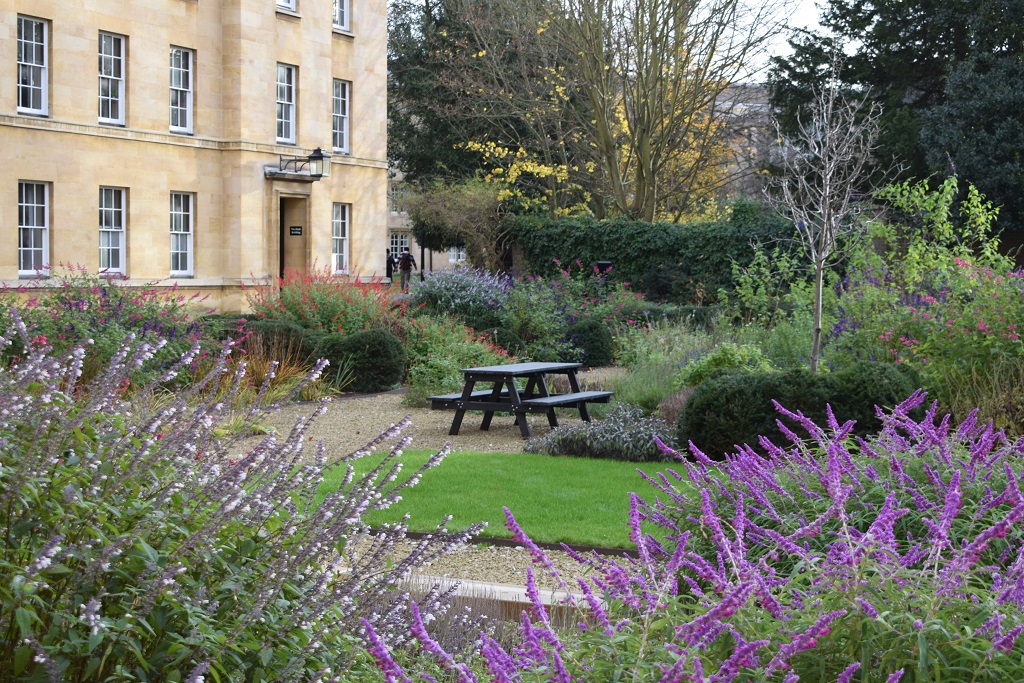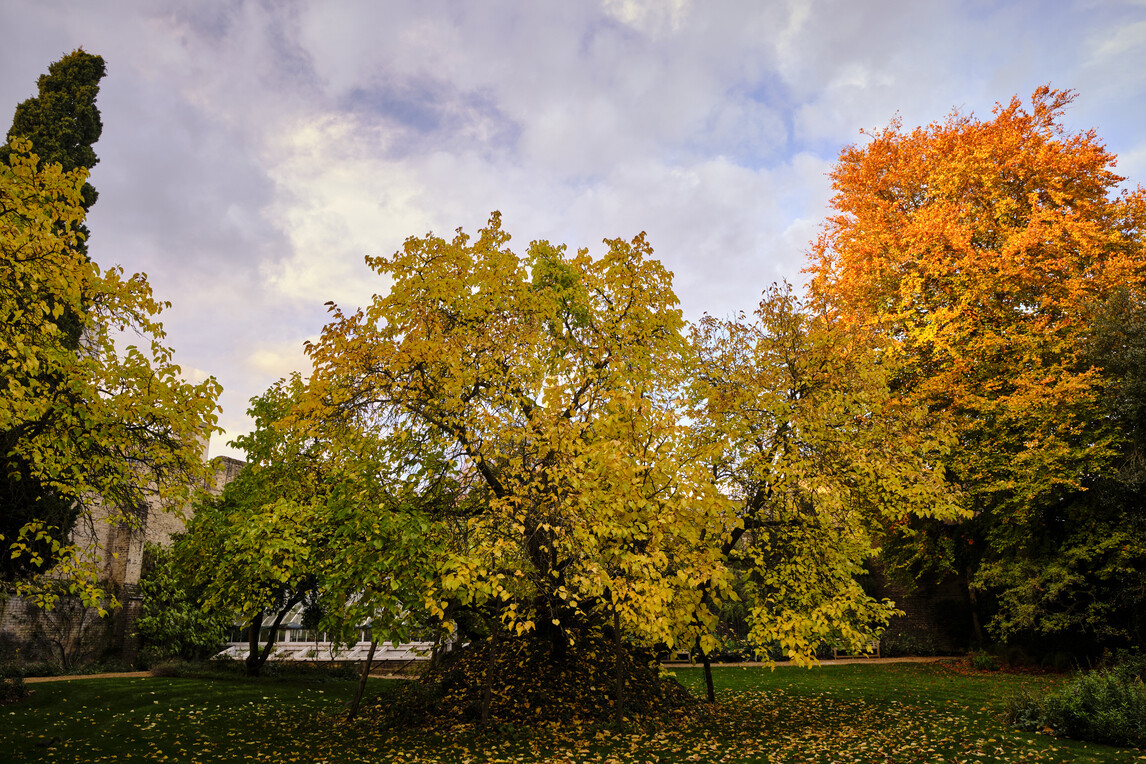Opening Times
Christ’s College, including the Gardens in First, Second and Third Courts and the Darwin Garden, is normally open to visitors between 9:00 and 12:00, 7 days per week. The Fellows’ Garden is open to visitors between 9:00 and 12:00, Mondays to Fridays.
Please note that the College and Gardens are closed during the College’s 'Quiet Period' around exams. Quiet Period usually lasts from mid-April to mid-June. You can download our summer garden guide or follow this garden plan.

First Court is the oldest part of the College, and much of it dates back to 1505. It includes a circular lawn – the only one in any of Cambridge’s 31 Colleges. The enclosed nature of this court creates a microclimate, allowing us to grow tender specimen plants. The court is bordered by a variety of shrubs, and a magnificent Wisteria sinensis covers the south-facing wall. The wisteria is thought to be around 200 years old.
Second Court consists of formal lawns bordered by an informal planting scheme. There is a long herbaceous border on the western side of the court. The Fellows’ Building at the top of second court dates from 1640-42. The gardens here feature borders of lush summer bedding.
Third Court features an extensive collection of irises and salvias. The iris collection began in 1946 when the College received a large number from a Mrs Zeligman. The court was recently redesigned to expand these collections.

The Fellows' Garden was structured in 1825 with informal borders, shrubs, trees and winding paths, reflecting the ideas of J. C. Loudon, whose intention was 'to display the individual beauty of trees, shrubs and plants in a state of nature'. Beside the path on the east side of the Garden stands Plantanus x hispanica. This enormous tree is thought to be more than 200 years old.
The Malcolm Bowie Bathing Pool, which is said to date from the mid-18th century, is situated near the bottom of the garden, as is the so-called Milton’s Mulberry Tree (Morus nigra). This tree, grown from a root of an earlier mulberry that was planted in 1608 (the year of John Milton’s birth, but otherwise having no connection with the poet), has been propped up by large wooden posts since it was uprooted in a storm in 1795. It still provides a good crop of mulberries each summer; the gardeners harvest these and take them to the College kitchens, where they are used to make jam.
The Fellows’ Garden is also home to some beehives. Honey made by the bees is collected annually and given to the Fellows of the College.

The Darwin Garden was created in 2009 as part of the celebrations to mark the bicentenary of Charles Darwin in 1809, and to commemorate his revolutionary contribution to the natural sciences. The garden is planted with a selection of plants that Darwin would have encountered on his botanical voyages on the ship HMS Beagle. Examples include Kniphofia uvaria ‘Nobilis’ and Echium pininana. The garden also features a statue of Darwin as a young man, sculpted by Anthony Smith.
The Master’s Garden is a secluded garden at the centre of the College, featuring herbaceous borders and a rill fed by the Hobson Conduit. The Master’s Garden is not open to the public.
